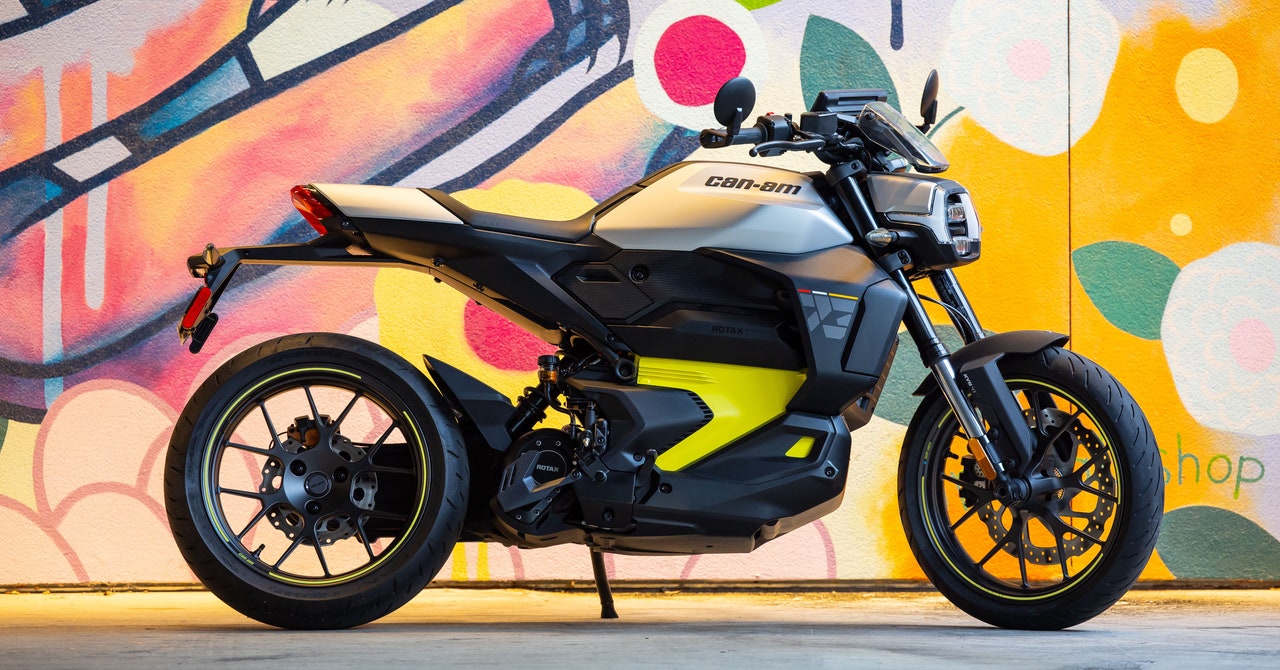
The twin-sport Origin has a metropolis vary of 90 miles and a mixed vary of 70 miles. Using flat out at common speeds above 55 mph, I noticed about 50 miles of vary. That’s sufficient of a distinction to note it in everyday use. The off-road knobby tires in all probability did not assist these numbers, both.
Each bikes include the identical 8.9-kWh battery pack. Within the metropolis, the Pulse delivers 11.2 miles per kWh. That barely bests the effectivity of the closest competitor, the Zero S ($14,995 and up) which delivers 154 miles of metropolis vary from a 14.4-kWh capability battery and has an effectivity score of 10.7 miles per kWh.
And, when you choose retro styling, let’s not neglect Maeving, which WIRED loves, with its new sportier metropolis EV choice, the RM1S, that has a 70 mph high velocity and 80 miles max vary, however with two necessary benefits: The batteries are detachable and swappable, and it prices beneath $9,000—significantly lower than the Can-Ams.
Each Can-Am bikes are outfitted with a Stage 2 AC (SAE J1772) charging port. Charging is accessible as much as 6.6 kW. Can-Am says that the bikes will cost up from 20 to 80 p.c in roughly 50 minutes. When requested about future variations supporting NACS (SAE 3400, aka the Tesla port), Can-Am acknowledged it might adapt in line with the evolution of the market and would provide adaptors if wanted.
Lively Regen Braking and Backing Up
One notably fascinating characteristic Can-Am has added to its bikes is lively regenerative braking. Passive regenerative braking on electrical bikes has been round for years. The rider twists off the accelerator and the bike slows itself utilizing the electrical motor. The glad byproduct of this method is that the motor sends the electrical energy created by this deceleration again into the battery.
However Can-Am has added one thing else to the combination. On its two bikes, this lively regeneration signifies that, after rolling off the throttle, the rider can twist the throttle past its impartial place as much as roughly 6 levels to allow extra regen braking. It is an fascinating answer to the problem of tips on how to greatest improve the effectivity of a bike with out including regen to the normal friction brakes.





